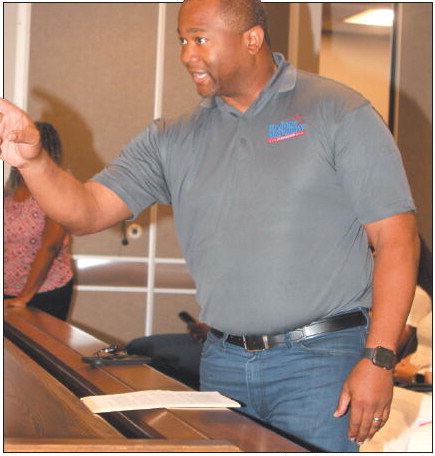continued from page The ….
continued from page
The total number of Americans who served in the World War II totaled 16 million with approximately 300,000 still living. Of that number, 245 die each day. The Department of Veterans Affairs predicts that all World War II Veterans will have passed away by 2043. Frank Buckles, the lone survivor of World War I, died in 2011 at the age of 110. After the first trip to Normandy in 1980, I kept returning. There were so many museums to visit and markers to graphically define what took place among the apple trees and hedgerows.
One summer there was a stop at Portsmouth, England, where the Allies embarked for Normandy. Amongthe landmarks visited there was the pub where the Supreme Allied Commander, Dwight David Eisenhower, spent down time while planning the invasion.
Locating and interviewing World War II veterans became an annual summer objective which led to unforgettable introductions and conversations. The first French family liberated came about when a British officer, John Howard, and his glider group took a vital bridge over the Orme River on the night of the invasion. The bridge became known as the “Pegasus Bridge.”
Howard’s paratroopers took the name of the famed horse of Greek mythology as their symbol. By the time I got to meet him, he was living in a retirement home in Albury Park near Guildford which is a little over an hour by train from London. I had to travel to Windsor, Canada, to meet Howard’s glider pilot, Jim Wallwork.
I had the good fortune to spend time with Stephen Ambrose, the celebrated WWII historian who was the founder of the D-Day Museum in New Orleans—that led to introductions to many second world war veterans, including a German panzer commander, Hans Von Luck. I remember his sobering quoteaboutthewar. “As a professional soldier,” Von Luck said, “I did my duty, but as a human being I hold no hate.”
We often forget about the “other side.” Many German soldiers were defending the fatherland. They did not start the war but were tenacious in their defense of their country.
At La Cambe, France, which is about 10 miles from the American cemetery at Colville, is a German cemetery. Few tourists go there; at least compared to the Allied cemeteries. On my first time to La Cambe, I bumped into a vignette that will always resonate.
A German soldier took leave a few days before the invasion to spend time with his wife. While with her, she became pregnant. He was killed at Normandy and his remains are at La Cambe.
His daughter, whom he never met, left this poignant note at his grave. “On my third trip here, I still cannot meet you. How many more daughters will never know their father because of war.”






